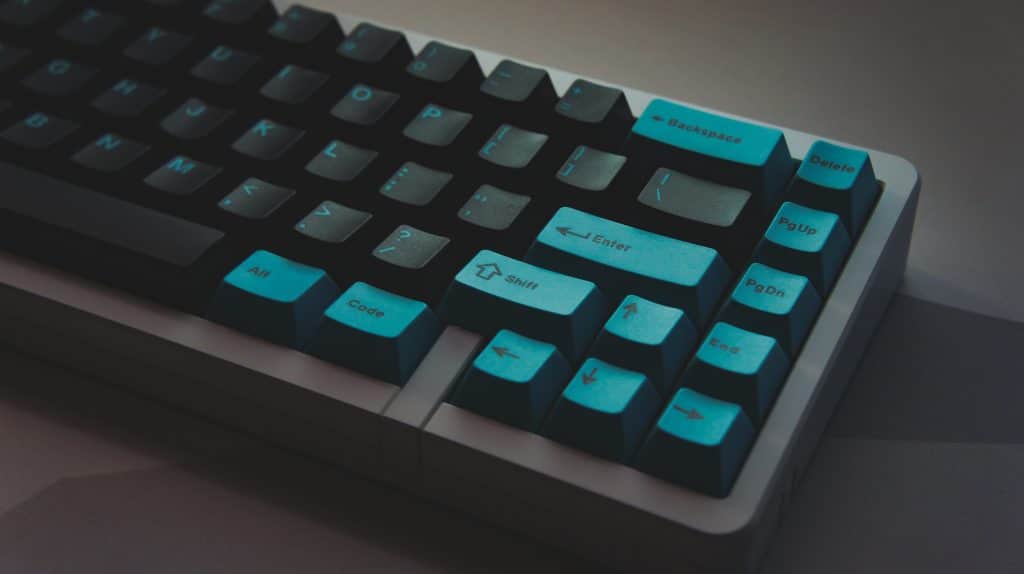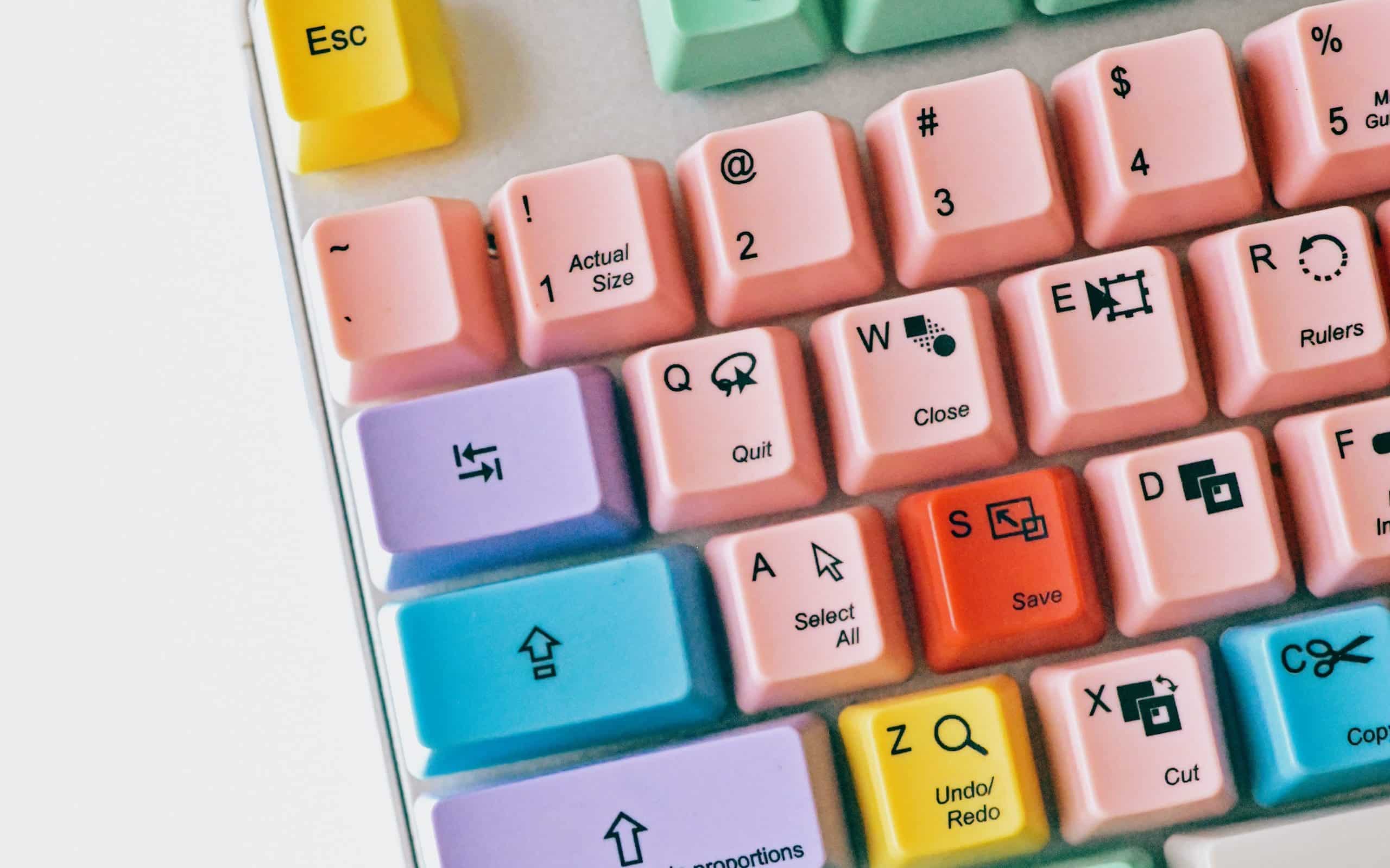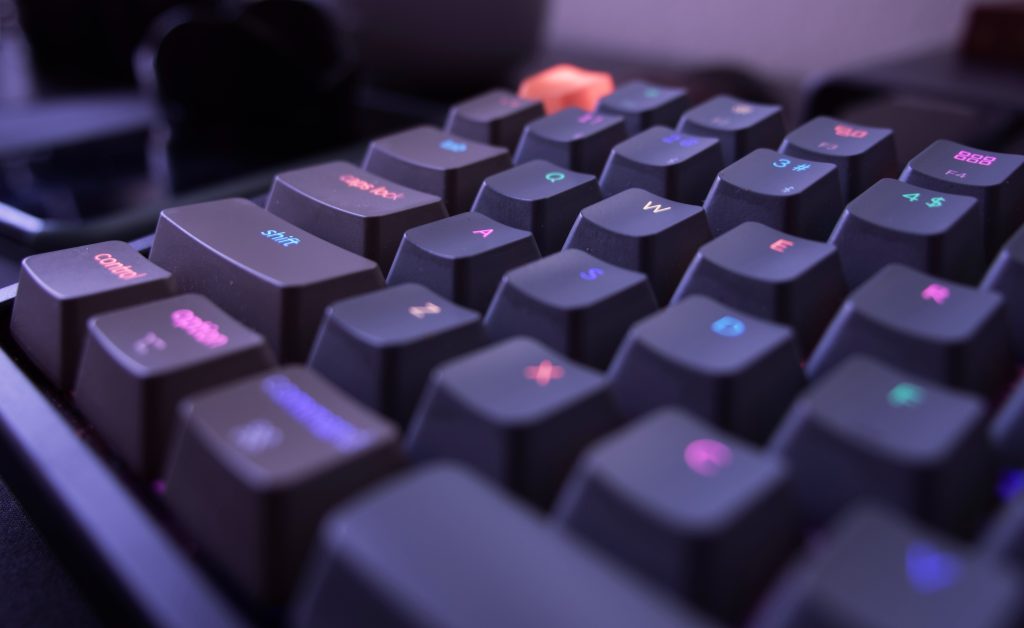In the digital era, amidst the hum of machines and the click-clack of typing, there emerged two devices that often got tangled in the same conversation: the keyboard and the synthesizer. But are they really interchangeable, or do they stand as two unique entities in the vast world of computers and music? Let’s decipher this binary code of confusion.

The Everyday Keyboard: More Than Just Typing
When you think of a keyboard, what’s the first image that pops up? Rows of keys, maybe the soft backlighting, or perhaps the unmistakable sound of typing. Keyboards are the unsung heroes of our digital interactions, the bridge between human thought and the digital display. They’re our primary tool for inputting data, be it in the form of a heartfelt email, a riveting piece of code, or a compelling story.
Synthesizers: Crafting Digital Sounds
On the flip side, synthesizers might share the same basic structure (keys), but they dance to a different tune. Synthesizers are designed to craft and modify electronic sounds. Instead of inputting text, you’re playing notes and shaping sounds. Whether you’re replicating the haunting notes of a grand piano or designing a brand-new extraterrestrial beep, synthesizers are the instrument of choice for the digitally musical.
Key Differences Between Keyboards and Synthesizers
Purpose
Keyboards serve as the workhorse for data input. They’re essential for tasks ranging from sending emails, programming, gaming, and even design. Synthesizers, in contrast, are solely focused on creating and modulating electronic sounds.
Design and Functionality
At a first glance, keyboards and synthesizers might appear strikingly similar. Both possess rows of keys. However, synthesizers typically come equipped with additional dials, switches, and sliders meant to tweak the sound output in real-time.
Connectivity
While keyboards are typically connected to computers or laptops, synthesizers can often be standalone or connected to other musical equipment, like mixers or sound systems.
| Aspect | Keyboard | Synthesizer |
|---|---|---|
| Purpose | Data Input | Creating & Modulating Electronic Sounds |
| Design & Functionality | Primarily keys for typing | Keys with additional dials, switches, and sliders |
| Connectivity | Connected to computers or laptops | Standalone or connected to musical equipment |
| Evolution & Advancements | From typewriters to advanced programmable keyboards | From basic sound generation to intricate sound modulation with DAWs |
| Roles in Modern Domains | Essential for gaming, programming, communication | Integral for music production, gaming soundscapes, film scoring |
| Future Prospects | Predictive typing, voice-to-text, VR integration | AI-generated music, mood detection, unprecedented sound creation |
A Touch on MIDI Keyboards
As technology evolved, a hybrid emerged: the MIDI keyboard. Though it looks like a synthesizer, it doesn’t generate sound on its own. Instead, it’s a controller, sending data to a computer or another device, which then produces the sound. It’s the tech-savvy cousin in this digital family, blending the world of keyboards with synthesizers.
The Evolution: Keyboards and Synthesizers in the Digital Age
As technology progressed, so did the capabilities and roles of keyboards and synthesizers. Let’s trace their steps through the annals of tech history.
The Ubiquitous Keyboard
The modern keyboard has undergone significant transformations since its inception. From the clunky typewriters of yesteryears to today’s sleek mechanical and membrane keyboards, they have become more ergonomic, responsive, and feature-rich. Keyboards now boast RGB backlighting, programmable keys, and even dedicated macro functions. These features not only enhance the typing experience but also cater to specific user groups, like gamers and graphic designers.
Synthesizers: The Sound Revolution
Synthesizers, while rooted in musical soundscapes, have also been impacted by the surge in technology. Advanced synthesizers can now simulate almost any sound, from classic instruments to futuristic soundscapes. They’ve expanded beyond just music production. Sound engineers in the film and gaming industries, for instance, often employ synthesizers to create atmospheric sounds or even iconic sound effects.
With the advent of digital audio workstations (DAWs) and software-based synthesizers, anyone with a computer can potentially craft the next big hit or score a cinematic masterpiece. The boundaries separating professionals from amateurs are steadily blurring, thanks to the democratization of technology.
Integration and Overlap
With technology continuously evolving, the lines between keyboards and synthesizers have occasionally blurred. Many keyboards now come with basic synthesizing functions, especially those designed for multimedia use. Similarly, some advanced synthesizers incorporate traditional keyboard functionalities to offer an integrated experience to users.
The Future: What Lies Ahead?
As Artificial Intelligence and Machine Learning seep deeper into the tech fabric, the future for both keyboards and synthesizers looks intriguing. Predictive typing, voice-to-text transformation, and even gesture-controlled inputs might revolutionize the keyboard experience.
For synthesizers, the horizon seems even more expansive. Imagine synthesizers powered by AI algorithms that can create music based on mood detection or even generate entirely new sounds that the human ear has never heard before.
The Symbiotic Relationship: How They Enhance Each Other
Despite their distinct functionalities, the interplay between keyboards and synthesizers in certain domains is undeniable. This symbiosis is especially evident in modern production setups, where seamless integration between various tech components is paramount.
MIDI: Bridging the Gap
The MIDI (Musical Instrument Digital Interface) protocol is a significant factor that has intertwined the destinies of keyboards and synthesizers. With the advent of MIDI keyboards, it became possible to control synthesizers, software instruments, and even lighting systems through a traditional keyboard interface. This amalgamation has opened up unprecedented avenues for musicians, producers, and live performers.
Gaming and Entertainment
Modern video games often rely on intricate soundscapes to immerse players in their virtual worlds. Here, synthesizers play a pivotal role in crafting ambient sounds, character themes, and dramatic scores. Gamers, using advanced keyboards with customizable hotkeys and macros, can further enhance the audio experience by triggering synthesized effects, making the gameplay more interactive and engaging.
Accessibility and Inclusivity
Technological advancements have not only brought about innovative features but have also made both keyboards and synthesizers more inclusive. Today, there are keyboards designed with braille for visually impaired individuals, and synthesizers that can be operated using gestures or eye movements, ensuring that technology is accessible to all.

Education and Learning
With the boom in e-learning and digital education tools, both keyboards and synthesizers have found their way into classrooms and homes. Kids learn to type and interact with digital platforms using keyboards, while synthesizers, often in the form of user-friendly apps, introduce them to the world of music in an interactive manner.
A Glimpse Beyond: The Post-Modern Era
As we steer into an era dominated by virtual reality (VR), augmented reality (AR), and mixed reality (MR), the roles and functionalities of both keyboards and synthesizers might undergo radical transformations. We might witness keyboards that float in virtual space, or synthesizers that craft sounds based on virtual environments.
Imagine attending a virtual concert where every attendee has a synthesizer tool, allowing them to contribute to the live performance. Or a scenario where your keyboard not only types but also provides haptic feedback based on the VR environment you’re interacting with.
Synergy in Creative Spaces
In the world of art and design, keyboards and synthesizers are demonstrating an unprecedented synergy. Modern art installations often incorporate sound as an essential component, with synthesizers providing the auditory landscapes that complement visual narratives. Meanwhile, keyboards are essential tools for artists and designers, offering quick shortcuts for software, controlling interactive elements, or even programming specific tasks.
The Role in Scientific Exploration
Beyond the realms of music and gaming, synthesizers have found a niche in scientific explorations. Researchers use them to generate specific frequencies for experiments, ranging from studying animal behavior to testing the resilience of materials under specific sound waves.
Keyboards, in these scenarios, are the primary data input devices. They record findings, control experimental setups, and interface with other advanced scientific equipment. The harmonious relationship between these two devices has empowered scientists to achieve more accurate and efficient results.
Environmental and Sustainable Advancements
In a world increasingly concerned with sustainability and environmental impacts, technology isn’t far behind in making strides. Newer versions of keyboards and synthesizers are being developed using eco-friendly materials, reduced electronic waste, and energy-efficient designs.
Imagine a future where your keyboard is made from biodegradable components or where your synthesizer runs on solar power. Such innovations not only make these devices more sustainable but also widen their appeal to a more eco-conscious consumer base.

The Challenge of Cybersecurity
As both keyboards and synthesizers become smarter and more connected, they also face the looming challenges of cybersecurity. Advanced keyboards can store user preferences, macros, and even login credentials. Similarly, modern synthesizers, especially those integrated with software, can store sound profiles, compositions, and other personal data.
Ensuring the security of these devices, then, becomes paramount. Future iterations will likely focus more on encrypted data storage, secure wireless connections, and safeguards against potential hacking attempts.
Community and Collaboration
The rise of online communities dedicated to keyboards and synthesizers is a testament to their cultural significance. Enthusiasts from around the world share their custom setups, sound profiles, tips, tricks, and even collaborate on projects. Such communities foster innovation, as DIY enthusiasts often come up with modifications and features that even big manufacturers hadn’t thought of.
Conclusion:
The intricate dance between keyboards and synthesizers is a testament to the boundless creativity and innovation of the human spirit. While, on the surface, they may seem like mere tools or instruments, their underlying stories reflect our civilization’s journey through the technological age. Keyboards, the unsung heroes of our digital communication, have continually evolved, adapting to our ever-changing needs. Simultaneously, synthesizers have revolutionized music and sound, pushing the boundaries of auditory experiences and making previously unimaginable sounds accessible to creators everywhere.
But beyond their individual capabilities, the real magic lies in their convergence. From the fusion of music and data input in MIDI interfaces to the shared spaces in gaming, art, and even scientific exploration, their combined potential is awe-inspiring.
As we stand on the cusp of a new era marked by AI, VR, and other technological marvels, it’s exhilarating to ponder the future roles and transformations of these devices. But one thing is certain: both keyboards and synthesizers will continue to shape our digital experiences, unlocking doors to new horizons and echoing the limitless potential of human imagination.

Experience is what matters at the end!!
Hi! This is Jacob Jay – founder of Keyboardgear.com! From childhood to adulthood, I’ve always remained passionate about IT, and the revolution in this industry, especially gaming on the PC can’t go out of my way. Since I’m an enthusiastic gamer, and I love to experience various gaming accessories, particularly mechanical keyboards, that really boost my gaming adventure manifolds. So, my nerve cells hit me to transfer my experiences into word form and share with others to identify the ideal keyboards perfectly fit for their gaming modes.
I know very well how hard it is to find the high-quality items available on the internet that ought to be exactly the same as seen as on the screen. But the counterfeiters have ruined the user’s trust. As I have passed all such situations, I’m obliged to deliver the genuinity and express the same as what I am saying.
So, now, I’m working on the mission to provide very helpful and frankly but trustworthy reviews and guides about various mechanical keyboards, mouses, and other gaming accessories as per my personal experiences and sound knowledge.
